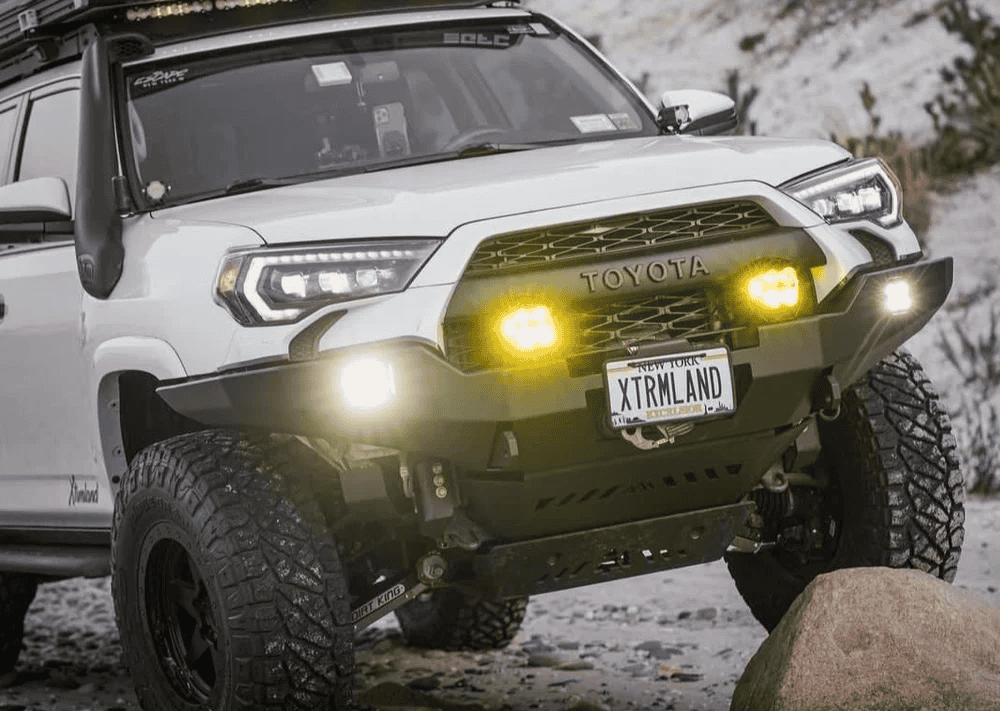Overland Vehicles

A cabover flatbed changes the geometry of a camper build in your favor. By removing the factory pickup bed, you gain a wider deck, consistent tie down points, and freedom to size the camper box for true expedition use. The result is a lower center of gravity, better approach and departure angles, and a quieter structure over corrugations. This layout supports the best overland truck camper setups because mass sits closer to the chassis and torsional loads get managed through proper mounts rather than improvised brackets.
Payload is the non negotiable spec. Start with curb weight, subtract from the gross vehicle weight rating, then allocate real numbers for water, fuel, passengers, gear, and the shell. A cabover flatbed keeps heavy systems like water and batteries low and inboard, which reduces sway and brake dive. Keep static loads between the axles and allow some margin for recovery gear that creeps in over time.
A quality flatbed starts with correct frame spacing, crossmember count, and a mounting system that allows controlled flex. Rubber isolators or spring mounts protect the camper structure when the frame twists off pavement. Plan deck length and width to clear tail swing, spare tire access, and departure angle. Integrate stake pockets, recovery points, and protected wiring conduits from day one.
Expedition campers need predictable energy. Match solar intake, alternator charging, and battery storage to your daily loads from refrigeration, lights, fans, and heat. Insulate the box, manage thermal bridging, and choose a reliable heat source with altitude capability. Keep fresh and gray tanks inside the thermal envelope whenever possible to prevent freeze issues and to improve weight distribution.
An expedition truck bed camper is engineered for repeated corrugations, frame twist, and asymmetric loading. Compared to a traditional slide in, the structure uses stronger wall joints, thicker hard points, and an articulating mount that decouples the camper from the frame. For off road truck camper travel, door and hatch seals must resist dust under negative pressure, and storage bays should be gasketed with positive latches that do not creep open on washboard.
Build the truck to match the camper, not the other way around. Select a chassis with adequate gross vehicle weight rating, axle ratings, and cooling capacity. Upgrade springs and dampers for control rather than height, add bump stops tuned for loaded weight, and run all terrain tires with strong sidewalls. Air systems help fine tune stance and cross weight when terrain or load changes.
Wheelbase determines breakover and turning radius. A modest wheelbase with a compact cabover flatbed camper often out performs longer trucks on technical tracks. Protect the rear with a tapered flatbed tail, maintain a tight departure angle, and stow the spare high enough to clear ruts while keeping serviceability in mind.
Dust finds every gap. Use compression seals, labyrinth vents, and filtered positive pressure to keep the living space clean. Vibration loosens anything not properly captured, so use lock nuts, thread locker where appropriate, and vibration isolators for appliances. Pack heavy recovery gear low in exterior boxes and keep daily use items accessible from the passenger side when parked on road shoulders.
The phrases cab over flatbed and cabover flatbed describe a layout where the camper extends forward over the cab while the main box sits on a flat deck. This format shortens overall length for the same interior volume and lowers mass compared to a tall slide in. A cabover flatbed truck can also adopt through bed storage, full length drawers, and integrated fuel or water cells that standard beds cannot accommodate.
A truck camper on flatbed trailer may work for long highway transfers or basecamp life, but it changes the trail footprint and breakover dramatically. If your routes include tight switchbacks, narrow forest roads, or deep ruts, a single vehicle solution is usually the better choice. Flatbed decks with modular tie points make camper removal possible when needed, yet the permanent mount approach often yields the strongest and quietest result for rough travel.
Interior planning benefits from the flat deck because you can run a full width galley, wider sleeping platform in the cabover, and still reserve a generous gear tunnel. Keep ventilation cross flow high and low, use condensation breaks behind cladding, and design service panels so pumps, filters, and fuses are accessible without tearing the house apart. The best systems are simple, labeled, and fixable on the side of a trail.
If you want a rig that tracks true on washboard, sips power off grid, and carries weight without drama, partnering with a shop that builds daily in real conditions matters. Explore our Overland rigs to see how a clean foundation supports reliable travel: Overland rigs. When you are ready for a tailored package, learn what goes into a Custom overland upfit that fits your chassis, payload, and route plan. New to our brand and process? Start here: Why choose OZK Customs.
We build and deliver from Fayetteville, Arkansas, where test loops, trails, and real mountain miles shape every decision that goes into a camper. Share how you travel, what you carry, and where you are going next, and we will translate that into a quiet, capable, and comfortable cabover flatbed truck built for the long road.
Ready for a purpose built overland rig that fits your routes and payload, not the other way around? Our team designs and builds expedition grade truck campers and flatbed upfits that ride quiet, track straight, and live well off grid. Share a few details and we will map a clear plan with timeline, budget, and proven components that work in real dirt. Start your build conversation today.
ADDRESS:
6159 E Huntsville Rd, Fayetteville, AR 72701
PHONE:
(479) 326-9200
EMAIL:
info@ozkvans.com